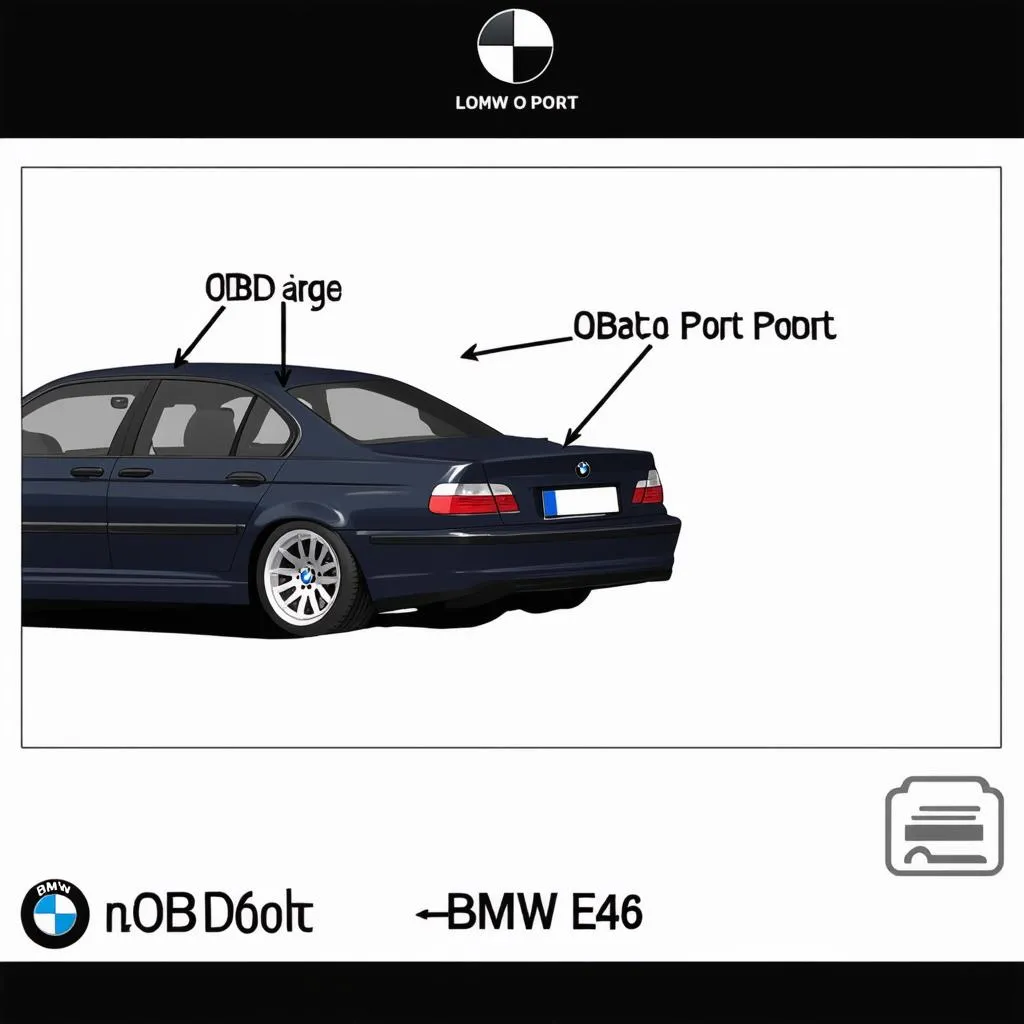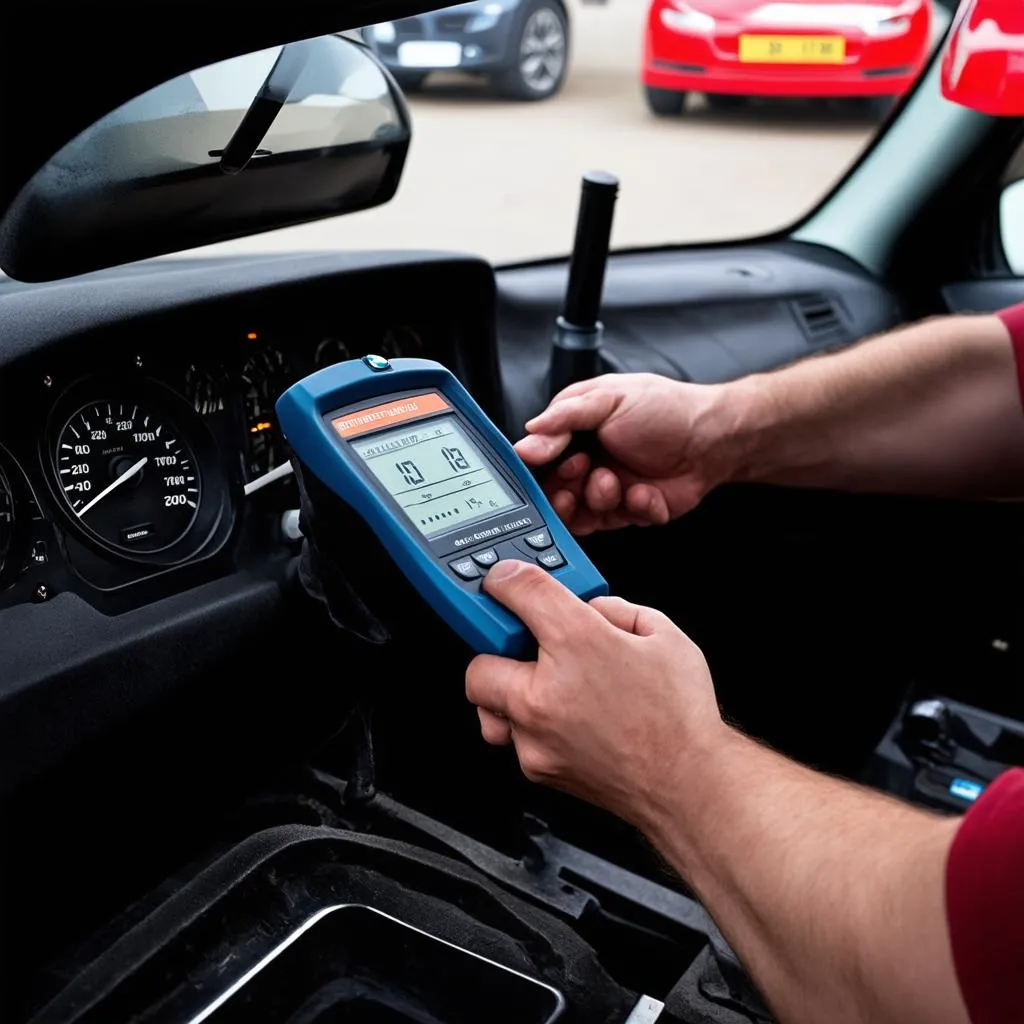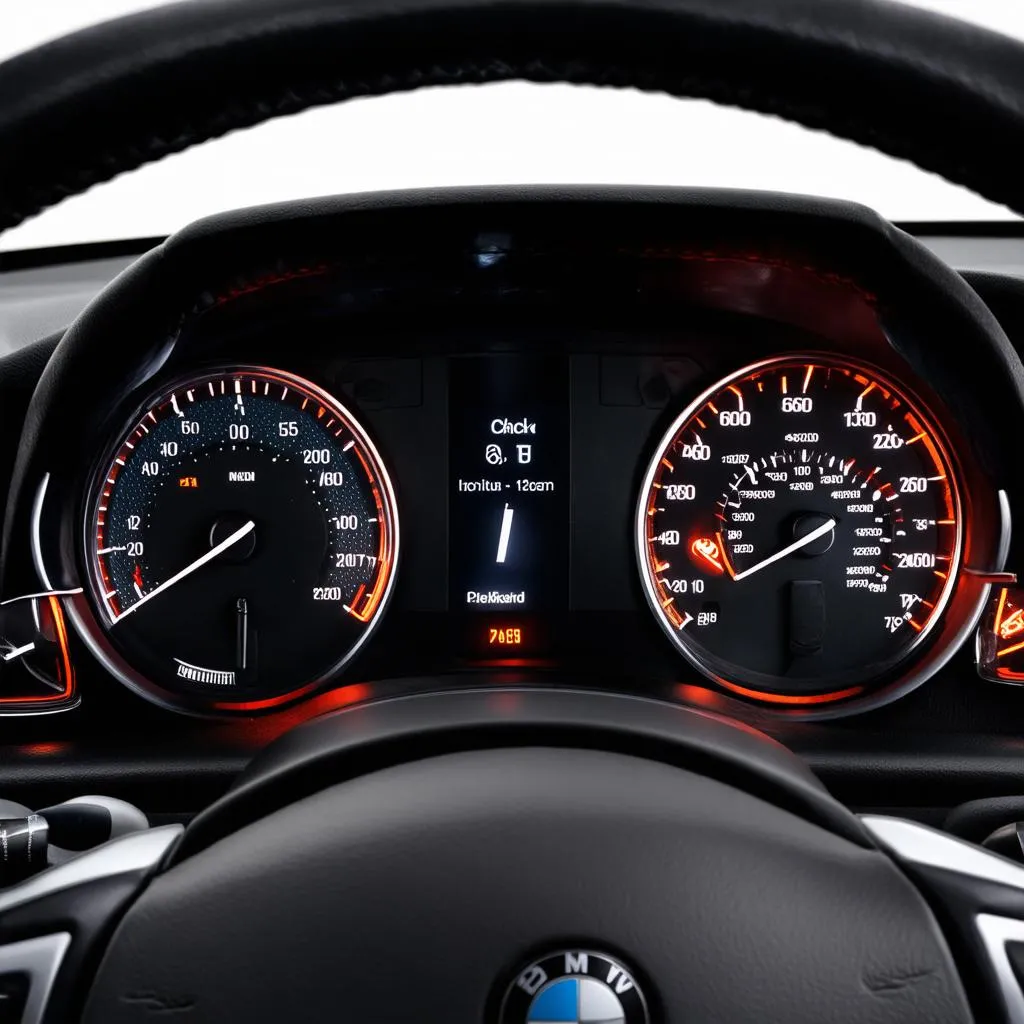You’re driving your trusty BMW E46 down the road, enjoying the smooth ride and classic design, when suddenly the engine starts sputtering and the check engine light flashes on. You pull over, wondering what’s going on. Is it just a minor hiccup, or something more serious? The answer may lie in the OBD (On-Board Diagnostics) system, and in this article, we’ll dive deep into everything you need to know about Bmw E46 Obd.
Understanding the Importance of Bmw E46 Obd
The BMW E46 OBD system is your car’s own internal diagnostic tool. It’s like having a doctor for your car, constantly monitoring various parameters and alerting you to any potential issues. It helps you troubleshoot problems early on, potentially saving you money on costly repairs in the long run. Think of it as a kind of “early warning system” for your car.
What is a Bmw E46 Obd Port?
The OBD port is a standardized connector on your car that allows you to access the onboard diagnostic system. It’s usually located under the dashboard, near the steering column. You can find your BMW E46 OBD port in a few ways:
- Check your owner’s manual: Your owner’s manual will have a diagram showing the location of the OBD port.
- Look for a small, rectangular connector: The OBD port is usually a small rectangular connector with a 16-pin layout.
- Ask a mechanic: If you’re having trouble finding it, your mechanic will be able to show you where it is.
What are Bmw E46 Obd Codes?
OBD codes are the language your car uses to communicate with you about potential problems. They are a series of numbers and letters that can be read using a diagnostic scanner. These codes offer valuable insight into what’s wrong with your car and guide mechanics in making necessary repairs.
Common Bmw E46 Obd Codes and Their Meanings
Here are some common BMW E46 OBD codes and their meanings:
- P0171: This code indicates a lean condition, meaning the air-fuel mixture is too lean. This can be caused by a variety of factors, including a faulty oxygen sensor, a clogged air filter, or a leak in the intake manifold.
- P0300: This code indicates a misfire, which can be caused by a variety of factors, including faulty spark plugs, ignition coils, or fuel injectors.
- P0420: This code indicates a problem with the catalytic converter.
How to Use a Scanner to Read Bmw E46 Obd Codes
To read the OBD codes, you’ll need a diagnostic scanner. You can find a variety of scanners online or at your local auto parts store.
Choosing the Right Scanner for Your BMW E46
You’ll need a scanner compatible with BMW vehicles and specifically the E46 model year. Many scanners are available, ranging in price and functionality. A basic scanner can read and clear codes, while more advanced scanners can perform live data monitoring, active tests, and other advanced functions.
Reading OBD Codes with a Scanner
Once you have a scanner, here’s how to read the OBD codes:
- Connect the scanner to the OBD port: Plug the scanner into the OBD port under your dashboard.
- Turn the ignition on: Turn the key to the “ON” position (don’t start the engine).
- Select the “OBD” mode: Select the “OBD” or “Diagnostics” mode on the scanner.
- Read the codes: The scanner will display the OBD codes stored in your car’s memory.
Common Bmw E46 Obd Issues and Solutions
There are many potential reasons why you might encounter a problem with your BMW E46 OBD system. Here are some of the most common issues and how to address them:
The Bmw E46 Obd Port is Not Working
If your BMW E46 OBD port is not working, you may have a faulty connector, loose wiring, or a problem with the OBD module itself.
The Bmw E46 Obd Scanner is Not Reading Codes
If you’re having trouble getting your scanner to read codes, you may need to try a different scanner, make sure the scanner is properly connected to the OBD port, or check for any loose wiring.
The Bmw E46 Obd Codes are Not Accurate
If you’re getting inaccurate or inconsistent OBD codes, you may have a problem with the sensor or the circuit that sends the data to the ECU (engine control unit).
Bmw E46 Obd: A Window into Your Car’s Health
The BMW E46 OBD system is a valuable tool that can help you stay on top of your car’s health. By understanding the basics of OBD codes, you can troubleshoot issues early on and avoid potentially costly repairs.
Bmw E46 Obd – Frequently Asked Questions
Q: How often should I check my BMW E46 OBD codes?
A: It’s a good idea to check your OBD codes regularly, especially if you notice any unusual symptoms, such as a decrease in fuel economy, a change in engine performance, or a check engine light. A good rule of thumb is to check them at least once a year or whenever you perform a routine maintenance check.
Q: Can I clear my BMW E46 OBD codes myself?
A: Yes, you can clear OBD codes yourself using a diagnostic scanner. However, it’s important to note that simply clearing the codes won’t fix the underlying problem. If you’re getting OBD codes, it’s always a good idea to have a mechanic diagnose the issue and make any necessary repairs.
Q: What should I do if I’m getting a BMW E46 OBD code that I don’t understand?
A: If you’re getting an OBD code that you don’t understand, you can consult your owner’s manual, search for the code online, or take your car to a mechanic for a diagnosis.
Q: What are some common BMW E46 OBD issues that I should be aware of?
A: Some common BMW E46 OBD issues include misfire codes (P0300-P0308), fuel system codes (P0171, P0174), and catalytic converter codes (P0420, P0430).
Q: What are some things I can do to prevent BMW E46 OBD issues?
A: You can help prevent OBD issues by regularly performing routine maintenance, such as changing the oil, replacing the air filter, and checking the spark plugs. You should also pay attention to any unusual symptoms your car is exhibiting and have any issues addressed promptly.
Bmw E46 Obd – Resources
- BMW E46 OBD Code Lookup: https://techcarusa.com/bmw-e46-obd-code-p0171/
- BMW E46 OBD Port Troubleshooting: https://techcarusa.com/bmw-e46-obd-port-not-working/
Bmw E46 Obd – Further Information
The OBD system on your BMW E46 is a vital part of its health. It can be a real game changer for you as a car owner, helping you understand and resolve potential issues before they become major problems. By understanding the OBD system and how to use it, you can take control of your car’s maintenance and ensure a longer, smoother ride.
 bmw-e46-obd-port-location
bmw-e46-obd-port-location
 bmw-e46-diagnostic-scanner
bmw-e46-diagnostic-scanner
 bmw-e46-check-engine-light
bmw-e46-check-engine-light
If you’re looking for a reliable solution for your BMW E46 OBD needs, contact us via Whatsapp: +84767531508. We have experts who can help you with all your diagnostic needs 24/7.
Let us know if you have any questions or feedback in the comments section below. We’re always here to help!